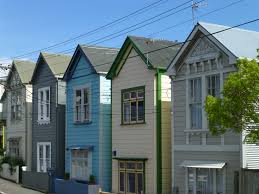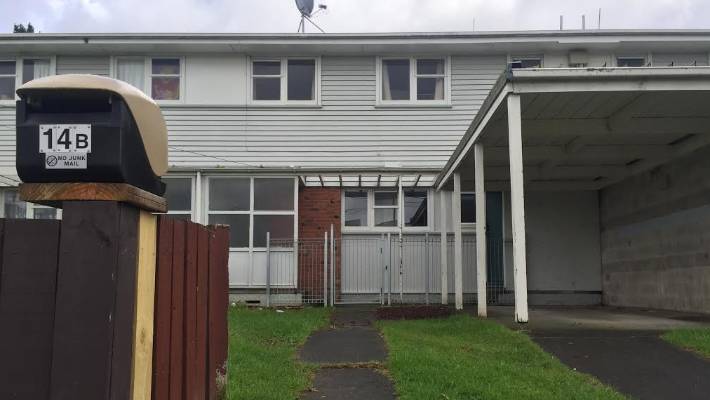People, Profit and Public Good – a lowdown on property development (1/2)
So we’ve that housing crisis, and Wellington’s figuring out how it wants to grow. Property development is at the core of it all, but most of us don’t know what makes things tick…
Of the two great engines of change in cities, transport is very visible, but property development is much more mysterious. Of all of us having opinions and reckons about property development, housing affordability, character, design, and planning… who really knows what goes on between the streets?
So the Urbanerds have been delighted to bring you a special virtual session with gurus of property development on 10 August.
We didn’t record this one at the request of the presenters so here are some highlights – part one with Peter Dow, and part two will follow with highlights from Chamanthie Sinhalage-Fonseka.
Peter Dow is one of the towering trees in Wellington’s property development ecosystem. (See our event listing here for his bio.)
He opened by putting the conversation in NZ’s housing context, noting that we need 34,000 new homes to be created per year for several years to make a dent in our housing crisis.
He’d done some special research for this Urbanerds discussion, which highlighted questions like the changing sizes of homes and households, ownership vs rental rates, and where nationwide our populations are growing. He highlighted the “forgotten group” of vulnerable people, living in often substandard accommodation, and the “approaching freight train” of our aging population. “We’re facing a health crisis, rather than a housing crisis” he declared.

The Property Developer’s life: heaven and hell
Dow sees being a developer as a huge privilege – you can make dreams a reality, it’s incredibly interesting, and you can potentially live a very comfortable lifestyle – and a huge responsibility. You’re shaping environments, and people’s lives; what you build has a huge impact on people’s wellbeing both physical and mental.
It’s hugely risky. Yes there’s the opportunity for some very big profit, but one misstep (or some bad luck) and everything can cascade to financial Armageddon.
Build costs are through the roof (which you can’t afford to put on)
If you tot it all up, in NZ to build a square metre of place for someone to live in costs ~$5,000-$5,500.
In other similar sized cities in developed countries, it’s in the order of $3,000-$3,500 per square metre.
So building a lot of things (including 6-storey apartment type buildings like the draft Spatial Plan and new National Policy Statement require) is crazy unaffordable for developers, and things aren’t being built.
Dow expounded in depth on what’s pushing costs up…
LOTS of things:
- NZ’s is an industry of small builders – lots of tiny SMEs.
- In fact through the whole value chain from the land underneath, through to the building of a home people are living in, NZ has too many separated layers, with each layer featuring a plethora of little profitmaking SME players, all scrambling for tenders, all adding 5 or 10% to their bit of the puzzle, all needing to be coordinated on a given project.
- We’re a culture of bespoke homes – everyone wants their home to look a bit different.
- We’re inefficient in the terms of the ratio of home area : land area. The trend until recently has been “go bigger” (against which Tiny Houses are a rebellion)
- NZ’s build process is largely on-site – the more efficient overseas trend is much more off-site building with minimal assembly on site
- When we think about creating homes, we have our collective heads in the wrong space: a “construction” mentality rather than a “production” mentality. The NZ home building industry’s in the same place as the car industry was in NZ in the late 1960’s early 70’s (making mediocre products slowly and expensively, not taking advantage of the efficient production and assembly approaches being used to huge advantage overseas)
- We import lots of the componentry for buildings, which is distributed by small number of hardware chains, but with large number of outlets who need to squeeze some profit out and don’t make a fortune. Even timber: NZ-grown timber is too expensive – it’s cheaper to import from Australia.

Dow made a point many others are making: the future is in multi-unit, multi-level homes (those 3-10 storeys) but we’ve made build costs far too expensive here too: the cost of infrastructure (roads, waters, power); policies and regulations written by people who don’t understand the industry; and also industry attitudes – hyper-competitive behaviour, and some cowboys.
Questioned about the relative influence of regulation vs other factors on the overall $5,500-5,000 m2 build cost , he told us that no single thing was dominantly responsible. But regulation is one of the most directly influential causes, and one of the most easily fixed.

Dow emphasised the importance of sustainability, but that the short-term conflict with profit-maximisation is a barrier that requires a great brand reputation (built up over time) in order to get the price premium that can cover the extra costs.
On heritage he was pithy: “there’s no question we need to preserve our heritage” but his main message was that a developer must assess if you’re dealing with people who are likely to listen. If you think the answer’s No, avoid any development that involves any heritage planning or consent process. “Life is too short.”

Dow spoke at length about the importance of helping the vulnerable – the “forgotten quartile” of people who have grave housing needs but who don’t qualify for social housing. It’s not good business to provide for these people; they’re amongst the 20-30% of Kiwis “living in crap accommodation”.
People look to government and councils to provide the better quality housing but they’re only able to provide 4-5% instead of the 20-30% needed. To bring NZ’s housing stock to a decent standard (healthy) overall will cost in the order of $120 billion at current costs of building. [Ed: for context, the whole COVID-19 Response and Recovery Fund is $50 billion over 3 years.]
Most developers, he said, do have a strong conscience – contrary to what you hear in the media.

Questions from the audience saw him elaborate on the relationship between profit, people and public good.
Some highlights…
Who should be doing more?
In case we hadn’t noticed, New Zealand’s got a housing crisis. To alleviate its “supply” dimension – people without a warm healthy home –we need 34,000 new homes, yesterday. The new NPS is fine but it doesn’t bring more money into the sector.
Currently it’s only government and private investors whose pockets are deep enough, and whose risk appetite is strong enough, to afford to create decent homes, at enough scale, to alleviate the supply element of the housing crisis.
Private sector capital is a completely vital contributor. But there’s not many of them: in Wellington you could count on two hands the number of developers with deep enough pockets to help make a dent in housing supply crisis.

Shouldn’t the government do it?
It seems obvious, but many people are asking “why doesn’t government just get its act together and do this?”
Even if the taxpayers and ratepayers could afford $120 billion, which we can’t, in a crisis, government’s current way of building homes is simply too slow, too cumbersome, too wasteful.
The private sector provides two things the public sector is currently pretty weak on: cash, and efficiency.
Without major private sector actors, you’re left with government trying to shoulder the burden of creating housing at vast scale.
And pure public service isn’t the right model to build at the pace and scale NZ needs. Kāinga Ora – and any “mini Ministry of Works for housing”– will always have a ~30% premium of cost and time greater than anyone else, because bureaucracies aren’t configured to be efficient and sharp with money in this way.
Isn’t it unhealthy to have profit-seeking players in the housing space, because they forget about people and public good?
NZ needs to channel private capital into the provision of housing, and profit is the strongest motive force that gets private capital into things. (Pure altruism is another, and ego, but altruism motivates a tiny proportion of the activity we need.)

But getting in more private capital doesn’t mean via hundreds of thousands of Mum-and-Dad type investors-cum-amateur-landlords, concerned dominantly with their bottom line. Instead, investment should be channelled via major investment vehicles that work through well-designed, socially responsible intermediaries, providing housing as a service to people in a professional way, with long experience, specialised staff and the benefits of scale.
What does it mean to say “accommodation needs to be more professionalised”?
This doesn’t mean property management businesses doing that as a commercial profit-making service for small, profit-driven Mum-and-Dad investors. It means professional in the sense that everyone understands that the provision of decent quality living is something that deserves professionalism in its supply. It’s a human right, too. Housing is important – it makes and breaks people’s lives. It shouldn’t be a space for amateurs to play around.
“Lots of people renting see their landlord like their employer, but they should see their landlord more like their internet provider”. In other words, housing is a service, and you want that service provided at a good price by a professional outfit, and you want a healthier market with more power to the consumer.

But there’s some crazy profits being made in property development – that feels wrong…
A lot of people’s eyes pop at the profits that greenfield subdivision developers expect – typically 20% minimum for a setup like Aotea. But major developers wouldn’t give the time of day to a project with less than a 30% return on investment.
Does this make them next-level greedy? Some, perhaps – like any sector, there’s people who are in it for less than good reasons.
But for most, the main driver of profit is being able to impress the bank, and get finance. (Yes, even a major developer doesn’t have $150 million sitting in their cheque account – they have to borrow it.)
In this space (the “can I borrow $30 million please”) the banks – the major unseen player – put much more weight on personal and institutional reputation and track record, than they do when dealing with an individual person who wants a loan.

If a major developer’s starting to get a reputation for doing things that cut down their profit, or add extra costs or time, that developer’s in trouble – banks don’ t like to hear that. They fear this will imperil their own profit. But banks are the only place developers or councils can get the cash to build, so like it or lump it this is a major Other Player influencing the system.
So at least in the short term, while we break the back of the housing shortage part of the crisis, we’ve got to be more OK with developers making profit. Because of the risks involved and because they’re reliant on the banks.
How could we get more profit and more public good?
We need better partnerships, or new entities, whereby private-sector development expertise (in delivering with minimal waste time and money) and public-sector public-good can come together around their capital – and enable other profit-making entities like investment funds to buy in, without anyone losing sight of the fact that it’s people, real people, who deserve a decent place to live.
Other countries have some good vehicles for this, which we need to grow. [Ed: Community Housing Trusts and other hybrid vehicles]. Iwi are getting into this space too which is exciting.
Download his presentation here [5.9 MB PPT]
Stuff’s Mandy Te covered the webinar here
Since then there’s been quite a lot of opinions about property development, much prompted by the proposed WCC Spatial Plan.
We’ll be providing a curated reading list (with our takes on where to take authors with a grain of salt)
I was referred here from generation zero website. When I saw the first picture, I was totally put off suppporting anything or anyone who would expect peoople to life in such ugly soulless places! The following illustrations also supported that view, the horrid block with just a tiny verandah to go outside is disgusting. I will not be supporting this if it is spatial planning. It is totally unimaginative, ugly and will promote depression and suicidal feelings among people who can’t afford anything else. You are so inhumane! I have seen attrative multirise living in photos of places overseas, with lovely rof gardens and plantings over the front of the houses, window boxes, etc, These multi rises are just inhumane. It is enough to work in one, without having to live in one also. shame on you.
Hi Linita, I’m confused. Are you commenting on the right article?
You seem *very* angry and upset about the prospect of … something, to do with spatial planning?
And you’re saying “shame on you” – to whom are you addressing this language?
This is a post reporting on an expert webinar about the property development situation in Wellington, given by Peter Dow and Chamanthie Sinhalage-Fonsecka.
> Kāinga Ora – and any “mini Ministry of Works for housing”– will always have a ~30% premium of cost and time
Is that including the 30% ROI for developers in the comparison?
If not, the cost difference becomes just one of time and that potentially could be solved (especially with scale and government skipping consenting processes etc)
Not sure I understand the question…
Kāinga Ora (who *is* the developer when it’s state-built social housing) is *paying* that 30% to the construction firms, anecdotally due to the overhead associated with lots of faffing around.